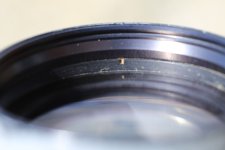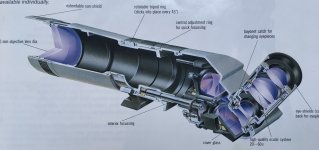Noseymosey
New member

I am trying to remove the ring which holds the objective lens glass in position so I can clean opposite side of lens as it has spots on it, maybe fungus ?? The ring which is next to the lens has cut out slots but there is another ring in front of this. Tried with the round rubber ring tool but with no luck. Anybody any tips on correct method or maybe someone has done this in the past. Any info greatly appreciated.






